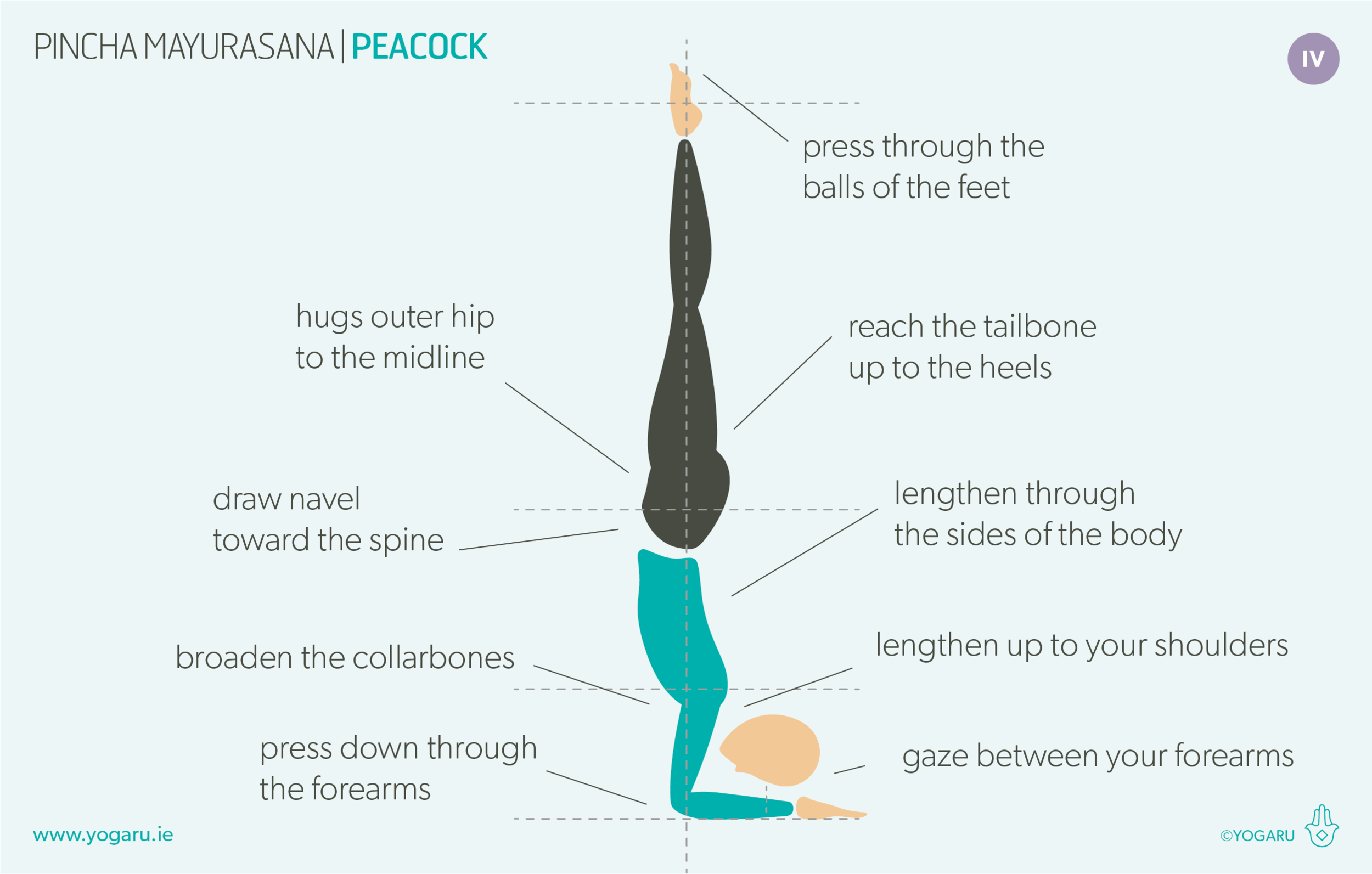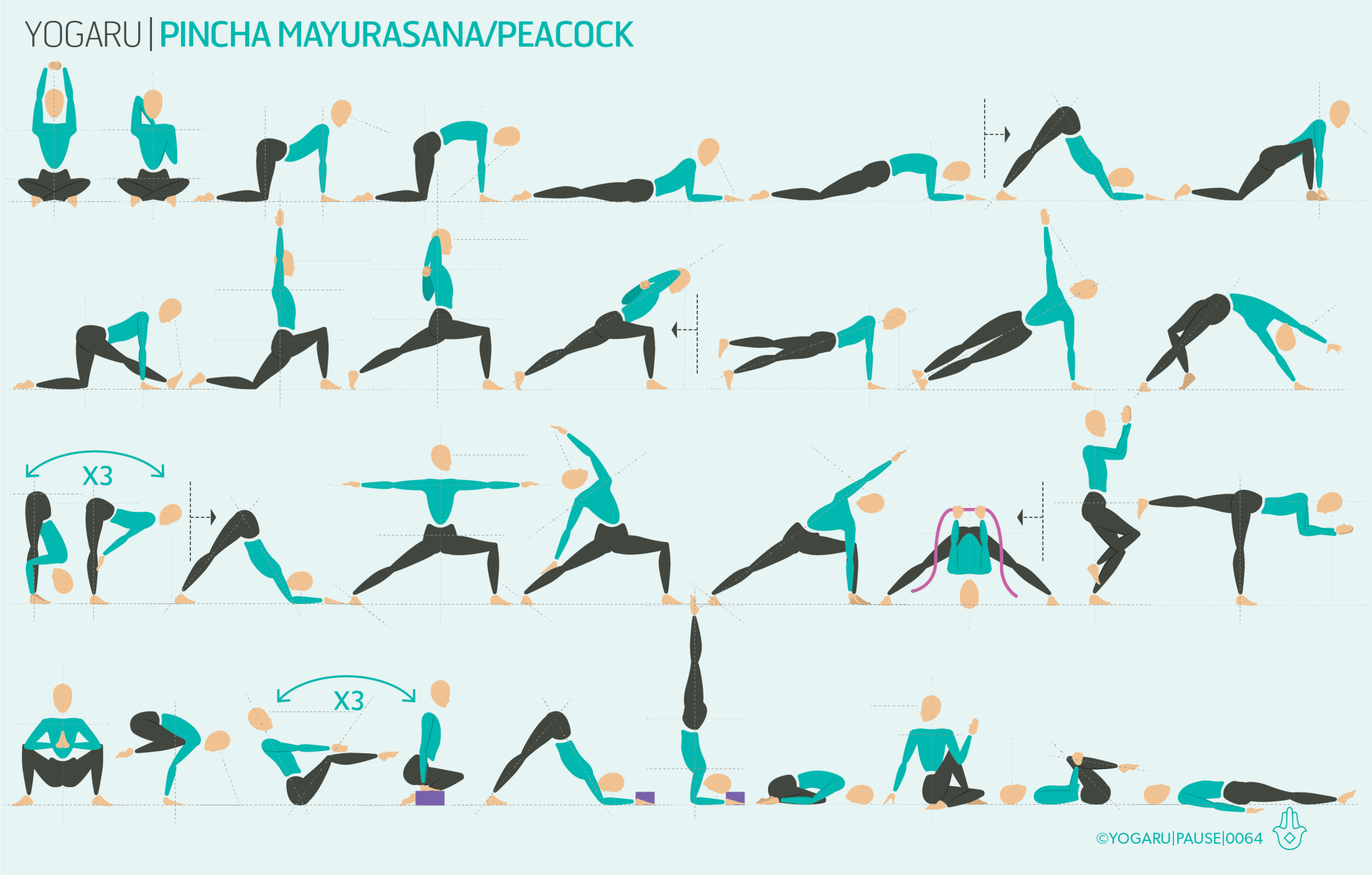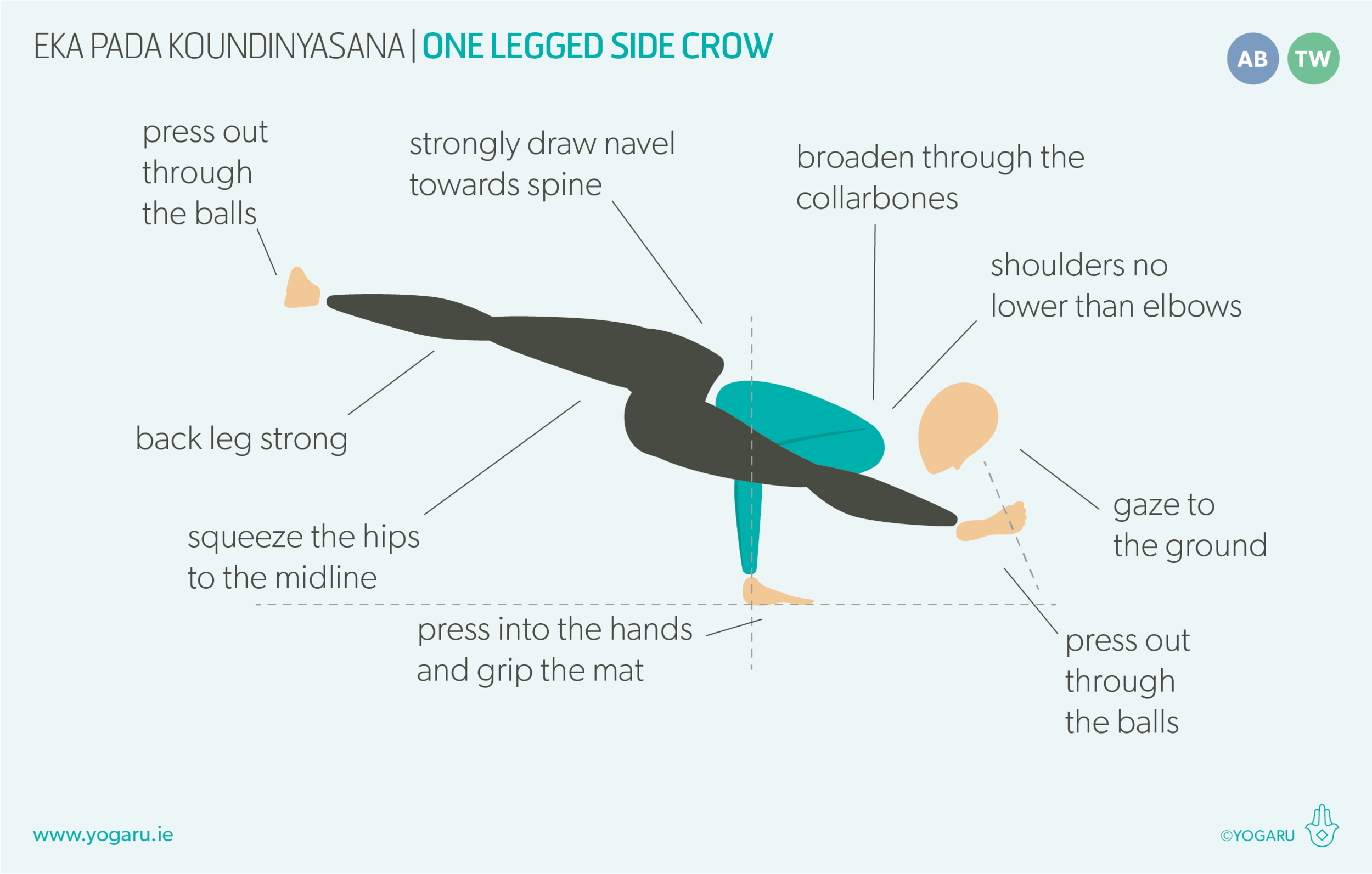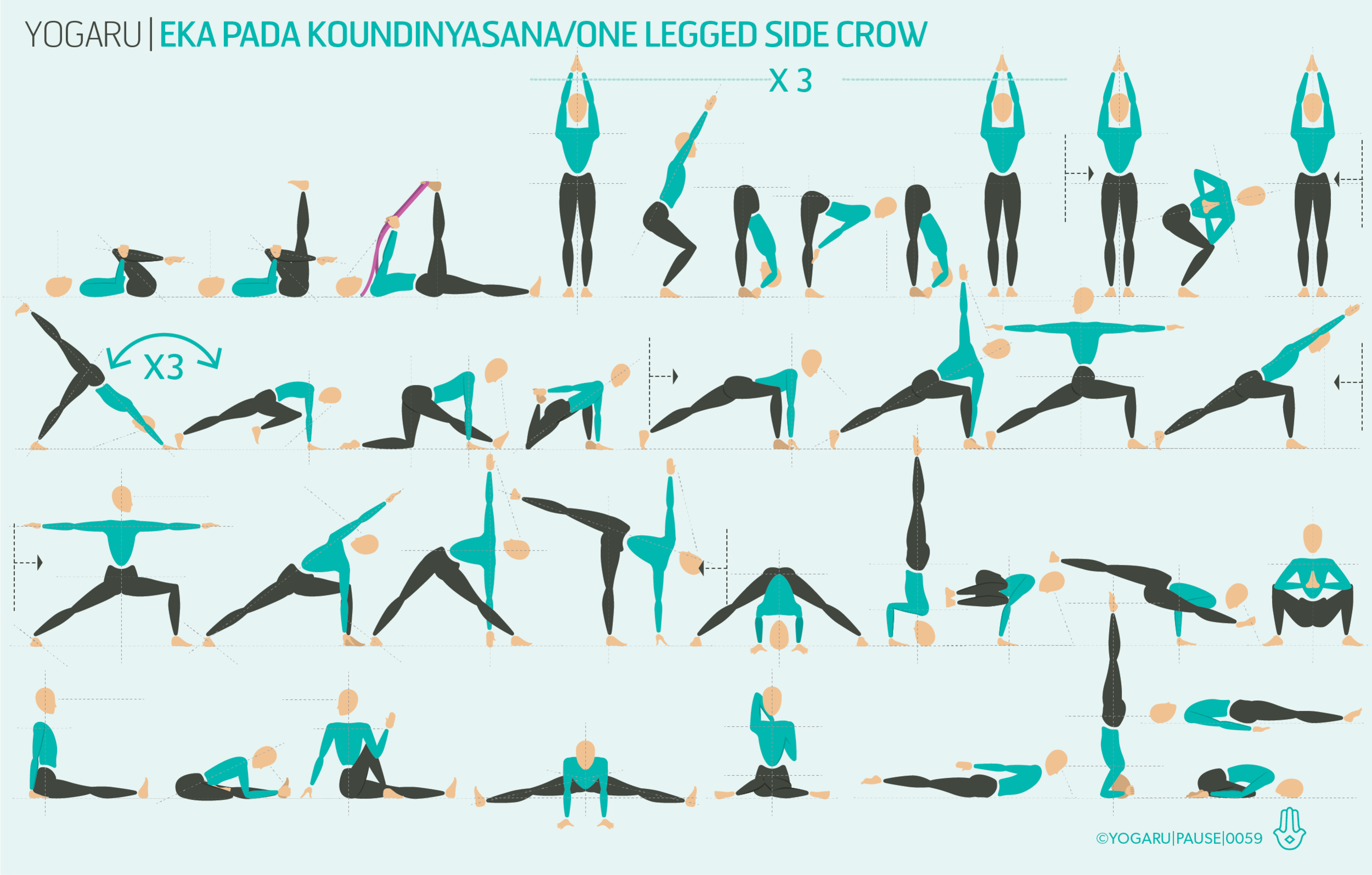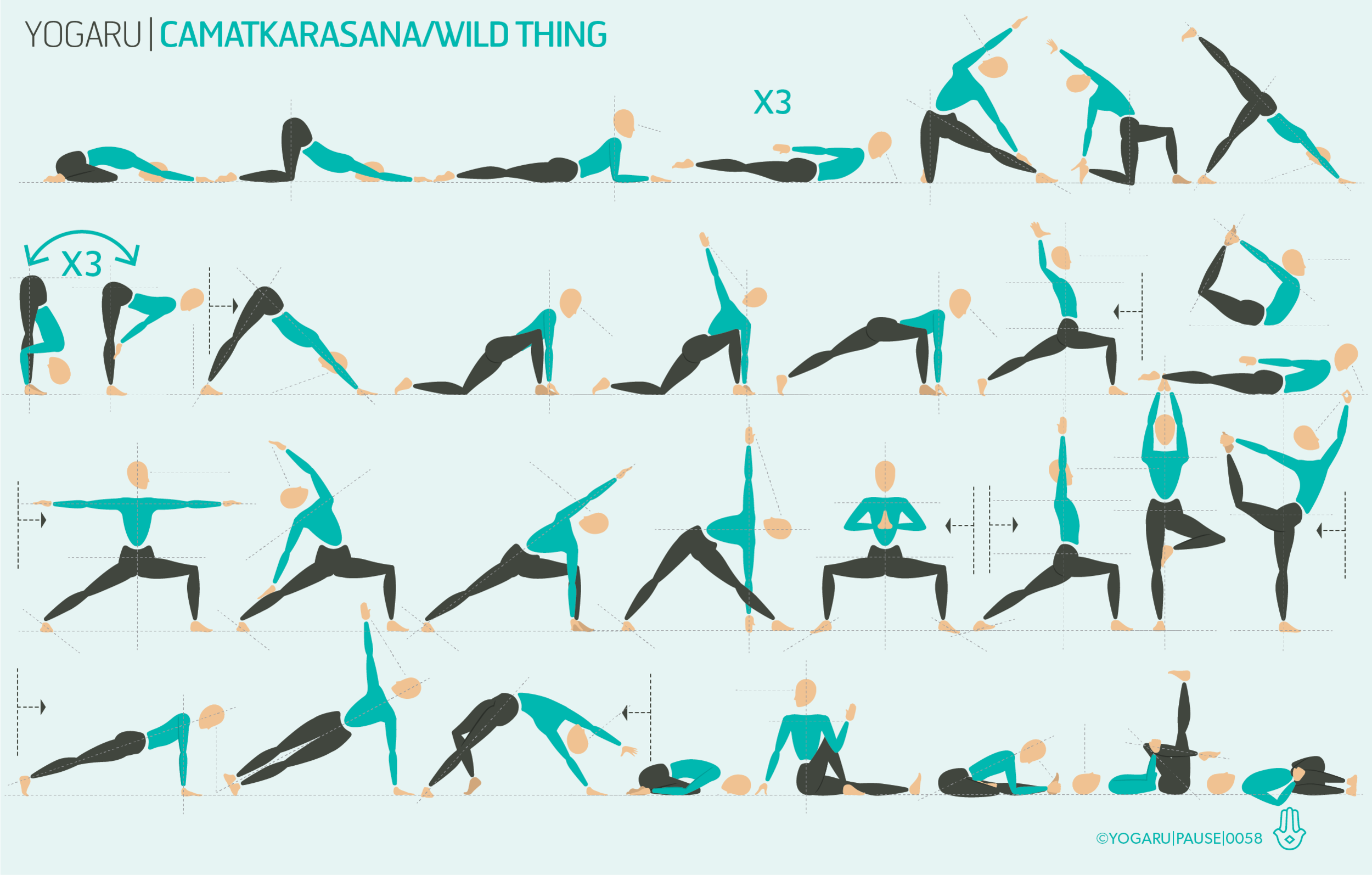GIVING THE SHOULDER CENTRE STAGE
In yoga the legs get plenty of attention and hard work in the duration of your time on the mat – from the sensory connection to the ground with the feet; the musculature energy of the legs in standing poses; to the intricate stretching and strengthening actions in the hips. The shoulder joint gets a lot less time in the limelight, and yet, when well warmed up, we ask them to hold the full body weight in arm balancing poses and inversions. We need to bring a bit more conscious attention to the integrity of the shoulders joint to prepare them for these more challenging poses. When we break down a pose like Pincha Mayurasana/Peacock we can see the importance of shoulders strength, flexibility and stability. As with every asana the shoulders don’t work alone – the core, arms and spine need to be strengthened too. One often forgotten area, that is important for the action of getting into kick up position in balancing inversions, are the hamstrings. This was a game changer for my inversion practice. I noticed that when I spent time warming up my hamstrings, I could walk my legs in closer to my forearms, and work towards reaching my pelvis further up over my shoulders and lengthen my kicking leg up more. Pincha Mayurasana/Peacock can be a good starting point for working towards Adho Mukha Vrksasana/Handstand. It teaches the principles of kicking up, with the benefit of a wider foundation on the ground, and less distance from the ground to potentially face plant! When the backs of the shoulders are tight it makes it harder to stack them over the elbows, and as a result the lumbar lower back over flexes to compensate and help find your centre of gravity – cause the ‘banana back’ effect. This sequence will help to avoid this by preparing the whole shoulder and all the assisting muscles that are recruited for Pincha Mayurasana/Peacock.
THE BENEFITS OF PINCHA MAYURASANA/PEACOCK
Pincha Mayurasana/Peacock is a very energising inversions. It strengthens the shoulders, arms, and spine and stretches the shoulders. Whilst it is very invigorating for the brain it is also very calming and helps relieve stress tension and anxiety. As an inversion it boosts the immune system and increases circulation.
EXPLORING PINCHA MAYURASANA/PEACOCK IN YOUR PRACTICE
As you run through the sequence pay particular attention to your shoulders. When the arms are reaching up, they are not just reaching up, they are reaching up with intention. The lines of energy are running all the way to your fingertips. Notice if you are bringing any unnecessary tension into your shoulders when your arms are raised. Soften around the shoulder joint while still maintaining the integrity of the strength required. Throughout the sequence Adho Mukha Svanasana/Downward Dog is replaced with Ardha Pincha Mayurasana/Dolphin to help prepare the shoulders for the peak pose. This is the perfect pose to add to any practice in order to strengthen the shoulders for all arm balances and balancing inversions.
ALIGNMENT CUES
The sequence will build strength and stability in the shoulders, arms and core. It will also prepare the legs to assist you if you are ready to try the kick up stage. Set your intention on strengthening your shoulders and staying within your safe limits, rather than expecting to achieve full Pincha Mayurasana/Peacock. There are two options – prep pose with hands pressing into the wall or the prop assisted full version of the pose.
Print out the below tips, along with the sequence, and spend some extra time exploring your shoulders:
HOW TO PREP FOR PEACOCK
Use this version to build shoulder strength to either build towards Pincha Mayurasana/Peacock or stay with this version fo the pose.
Set your mat short side up against a wall. From kneeling, place your forearms parallel on the ground, shoulder width apart. Place your hands at the wall fingertips reaching away from you.
Lift your knees and walk your feet forward. Press down through your forearms, lengthen up to your shoulders, broaden your collarbones. Gaze between your forearms.
HOW TO USE PROPS FOR PEACOCK
Once you are happy your shoulders can hold your inversion move on to this version of Pincha Mayurasana/Peacock using a brick to help you stabilise your foundation.
Move your forearms about two inches away from the wall. Place the long side of a brick between your hands – fingers on the short side and thumbs on the long side of the brick.
Press down through your forearms, lengthen up to your shoulders, broaden your collarbones. Gaze to the brick between your forearms.
Bend your left leg, lift your right leg up and press out through the heel. Spring your right leg up overhead, follow with the left leg, reach your legs up high, draw your navel towards your spine.
Hug your outer hips and inner thighs to midline, press through the balls of your feet, reach your tailbone up to your heels.
To come down, slowly bend your knees and lower your feet to the ground.
Enjoy turning your practice upside down, focusing on the shoulders and letting the legs look after themselves for a change.
To save the images for personal use click and hold down the image until the ‘save image’ option appears; on Mac hold down ‘control’ and click the image to get the option box; on PC right click on the image to get the option box. Scroll down in the ‘option box’ and click ‘save image’.
Ruth Delahunty Yogaru


